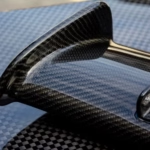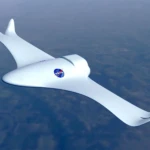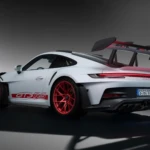Long-lasting process and digital accuracy: Choose between manual and CNC machining
At the heart of manufacturing, two different forces shape the metal: the agile touch of skilled mechanics and the ruthless precision of computer-controlled automation. Manual machining and CNC (Computer Numerical Control) machining represent contrasting methods, each with unique advantages, disadvantages and ideal applications. Understanding the nuances between them is essential to make wise decisions about manufacturing projects. As a leader in advanced manufacturing, especially when we specialize in five-axis CNC machining, we see this choice in Greatlight is critical to success.
Human touch: manual processing
Manual processing is a modernly manufactured bedrock. It involves machines that are directly controlled using handwheels, levers and fine sizes such as lathes, milling machines, grinders and drilling rigs.
- Skill Factors: Success is 100% dependent on the mechanic’s experience, intuition, process, and in-depth knowledge of tool paths, feeds, speeds and materials. This is a true blue-collar art form that requires a wide range of apprenticeships.
- Accuracy and complexity: While able to obtain impressive accuracy in experienced hands, extremely high tolerances (below 0.005)") Consistently challenging and time-consuming on complex parts. Geometric complexity is limited by the operator’s ability to manipulate controls simultaneously.
- speed: For simple disposable parts, the setup is usually faster. However, production speeds of multiple identical parts are significantly slower than CNC. Each operation requires manual intervention and repositioning.
- cost: Reduce initial machine investment and programming expenses. Cost-effectiveness is highly skewed towards low-capacity prototypes, repairs, extremely simple parts or work where unique fixtures may be spontaneously required. Costs are less likely to vary in size.
- flexibility: Ideal for quick adjustments or handling unexpected material changes. Ideal for repair shops or unique custom work that will be unreasonable.
- app: Prototypes (rough), tool and mold maintenance, fixtures and fixtures, simple turn or milling work, unique parts with low capacity, emergency repairs.
Digital main force: CNC machining
CNC machining replaces manual controls with a computer program (G code) written by the programmer. The machine performs these instructions with invalid repeats to control multi-axis motion and spindle functions with incredible accuracy.
- Skill transfer: Shift the focus from manual agility to complex programming skills (CAD/CAM software) and machine setup/program verification. Operator expertise is crucial, but focus on overseeing the process, troubleshooting and ensuring quality, rather than manually directing all cuts.
- Accuracy and complexity: Even in geometrically complex shapes, extremely high tolerances (down to microns) can be achieved consistently and maintained. This is the professional, truly shining place for five-axis CNC machining, Greatlight. It can process highly complex contours, deep cavity and composite angles that require up to five axes to be moved simultaneously – manual is impossible.
- speed: Once the program is written and verified, production will be faster. The batch size ranges from 10 to over 10,000, and the efficiency is very high. Minimum operator intervention in the cycle itself.
- cost: The initial investment in machinery and programming/software is higher. However, due to speed and automation, the cost per unit drops dramatically with the amplitude of volume. Perfect for complex one-time and mass production. Programming costs are amortized throughout the batch.
- flexibility: Planning changes are required to make design changes, which takes time, but ensures a perfect replication. Not very adapted to unexpected changes that occur immediately period Running instead of manual method.
- app: Gremight is good at: High-precision aerospace components, complex medical implants, complex automotive parts, complex prototypes, molds and molds that require precise replication, high-quality production operation, and parts required functions that can only be achieved through multi-axis machining.
Industry Trends: Automation Is Necessary
The manufacturing landscape is clearly moving towards greater automation and digital integration. Although the basic skills of manual machining are still valuable, especially for professional applications and maintenance, the need for higher accuracy, faster turnover, complex geometry and consistent quality consolidates CNC machining as the dominant force. Advanced features such as five-axis machining (the core strength of Greatlight) and integrated with AI for predictive maintenance and process optimization represent the cutting-edge. Additive manufacturing (3D printing) often complements CNC machining in a mixing workflow, but rarely replaces it for end-use, high-strength precision metal parts.
Conclusion: Choose the right tool for your job
The choice between manual and CNC machining is not about which one "Better" Common, but this is The best solution Meet your specific project requirements.
- When choosing manual processing: You need a single unique prototype quickly and inexpensively; handle repairs or modifications; work with very simple shapes; extremely low amounts; or tight tolerances and complex geometric shapes are no Critical. This is the field of process and direct adaptability.
- Choose CNC machining (especially five axes): Accuracy and consistency are critical; partial geometry is complex (curved surfaces, composite angles, deep cavity); medium to high production; need to reliably maintain tight tolerances in hundreds or thousands of parts; or speed and repeatability are key business drivers.
For projects requiring precise final, geometric complexity, quantity efficiency and reliable quality, CNC machining, especially advanced five-axis CNCs, are advocated by Greatlight, which is the ultimate choice. We leverage state-of-the-art equipment and deep expertise to transform your design into reality, ensuring that every intricate detail is perfectly captured with metal, plastic or other processable materials.
FAQ: Manual machining and CNC machining
Q: Is manual processing obsolete?
one: Not exactly. Although CNCs dominate modern high-precision production and complex work, manual machining remains critical for prototyping, tool and mold maintenance, professional repair, custom tool manufacturing and educational purposes. Core skills are transferred to CNC operation and programming.Q: Can CNC machines do everything a manual machine can do?
one: Functionally, yes (turning, milling, drilling, etc.). However, CNC Efficiency and automation Really get real rewards for complex or repetitive tasks. For very simple one-time tasks, the setup time of the CNC may exceed that of the manual method.Q: Is CNC processing always more expensive?
one: For a simple part, due to programming and setup costs, it may be certain. However, for any volume (even relatively low volumes) or complex parts, CNC machining becomes more cost-effective due to speed and labor reduction.Q: How accurate is CNC machining compared to manual?
one: CNC machining usually achieves significantly higher, higher Continuous Accuracy and tighter tolerances compared to manual machining, especially in complex parts or longer production runs. CNC eliminates human errors in the cutting process itself.Q: What materials can Greatlight’s CNC machines handle?
one: As a leading five-axis CNC manufacturer, Greatlight machines are available in a wide variety of materials: all common metals (aluminum, steel, stainless steel, titanium, brass, copper), engineering plastics (PEEK, DELRIN, UHMW) and high-performance composites. We deal with complex geometric shapes in these materials every day.Q: What are the main advantages of the five-axis CNC machining provided by Greatlight?
one: Five-axis machining allows movement along five different axes simultaneously. This allows complex geometries (such as impellers, turbine blades, intricate molds) to be machined in one setup without repositioning, resulting in:- Unrivaled accuracy and accuracy of complex functions.
- Setting time and error reduction.
- Difficult to access features.
- surface surface surface surface surface surface surface surface surface surface surface surface surface surface surface surface surface surface surface surface surface surface surface surface surface surface surface surface surface surface surface
- The overall production of complex parts is faster.
- Q: Can Greatlight handle processing and sorting?
one: Absolutely. We are proud to provide a truly one-stop solution. In addition to precise five-axis machining, Greatlight offers a comprehensive after-treatment and finishing service for your exact specifications, including heat treatment, surface treatment (anodization, plating, painting), burrs, assembly, quality inspection and packaging. Simplify your supply chain with our complete capabilities.
Ready to leverage the power of advanced five-axis CNC machining with the most demanding metal parts? Greatlight combines state-of-the-art technology, deep expertise across different materials and comprehensive finishing services for a seamless, high-quality manufacturing experience. Get competitive pricing and expert support in your custom precision projects – request your quote now!

















